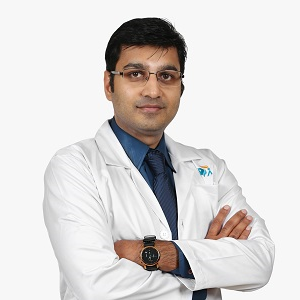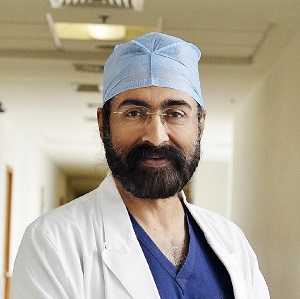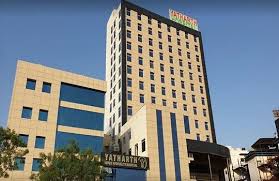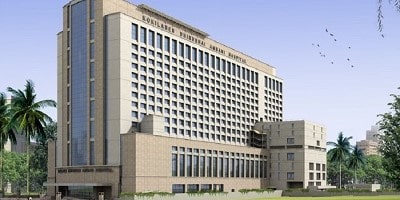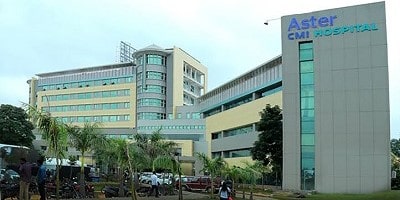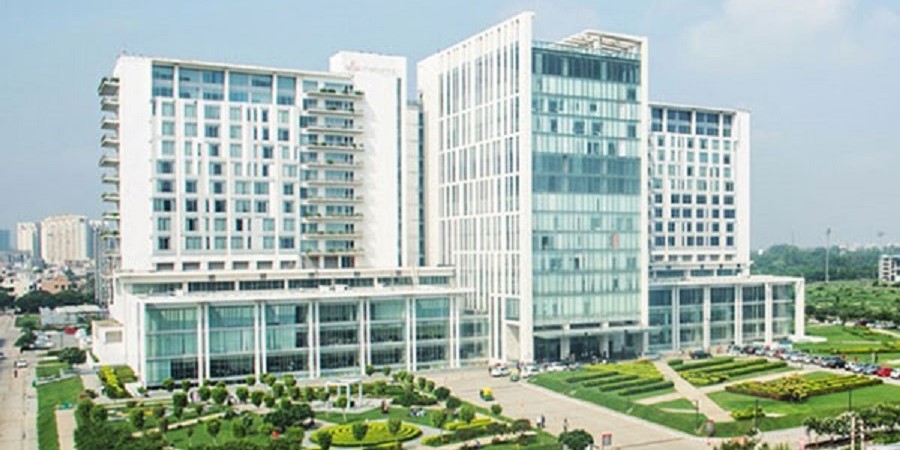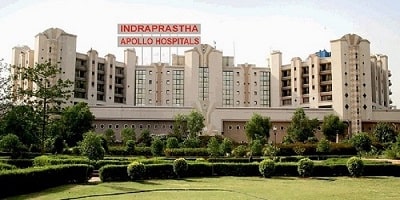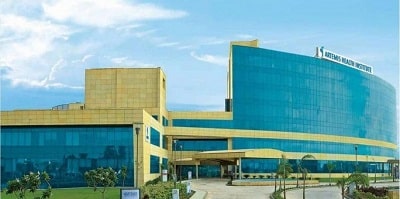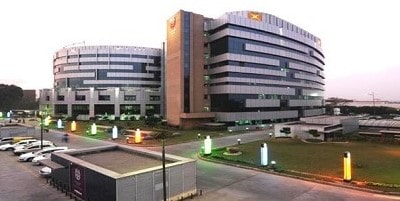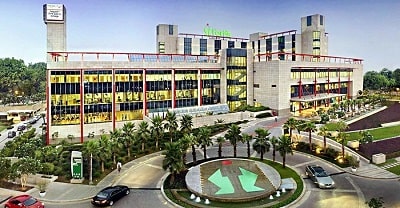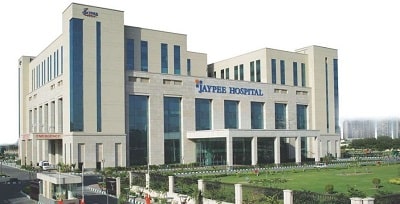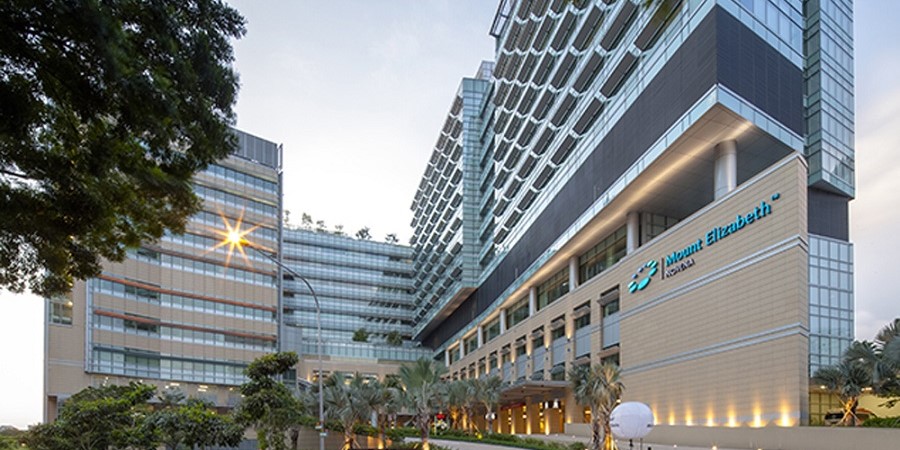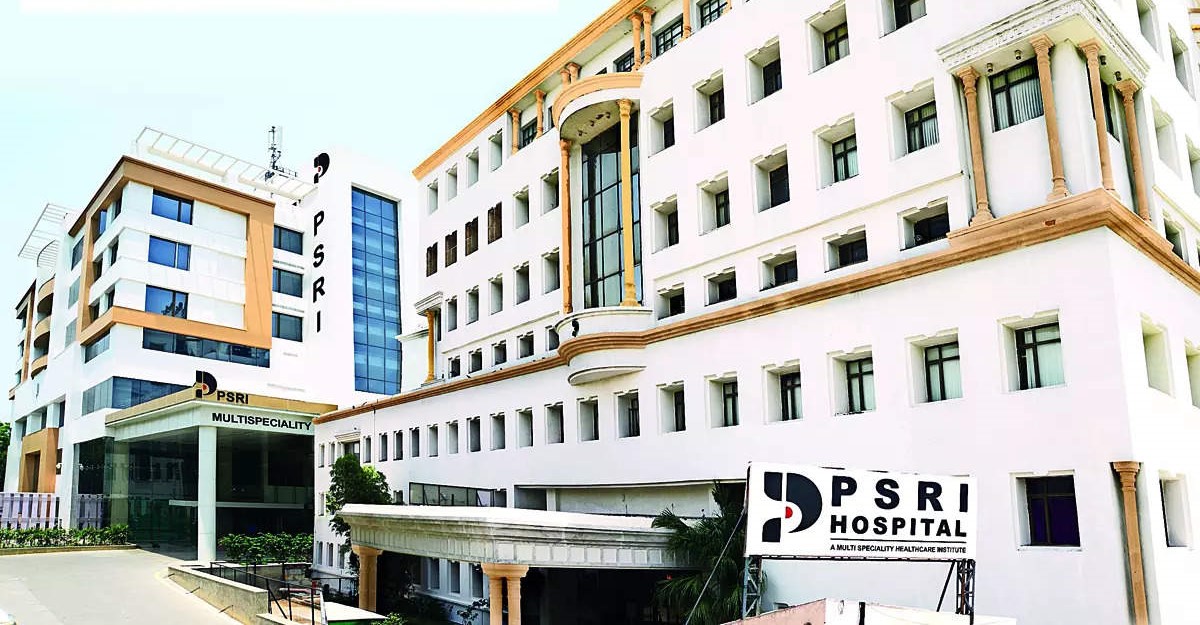
Duration of Treatment
usually takes 10 hours
Days of Stay
Usually 21 days in the hospital and 30 days outside the hospital.
Anesthesia
General anaesthesia.
Cost
28,000 to 35,000 USD
How much does Liver Transplant Cost in India?
"Looking for liver transplant cost in India at the best liver transplant hospital in India at an affordable cost in different cities like Delhi, Mumbai, Chennai, Kolkata, and Bangalore? Here, we answer the question and explain how to choose the top best liver transplant surgeon in India for better results; our surgeon did more than 1000 transplants successfully.
- Liver transplant cost in India: starting from 28,000 to 35,000 USD
- Medicine Cost for a lifetime: 200 to 300 USD (per month).
- Hotel Cost Near Hospital - starting from 18 to 50 USD (as per hotel services)
- Food Cost - starting from 20 to 30 USD (per day)
- Miscellaneous cost - 20 USD (per day).
- It's only a rough estimate, final treatment will plan after the fresh evaluation reports.
- Liver transplant surgery costs in India can vary as per the diagnosis, patient conditions, liver surgeon experience, hospital facilities, and city.
- To make an appointment, learn more about the liver, read the below information, or call / WhatsApp/ Viber - our experts to answer at +91 9582708782.
Who is the best Liver Transplant Surgeon in India?
- Dr.Abhideep Chaudhary – BLK Hospital
- Dr.Subhash Gupta – Max Hospital
- Dr.Vivek Vij - Fortis Hospital
- Dr.Mohamed Rela - Rela Medical Centre
- Dr.Neerav Goyal - Apollo Hospital
- Dr Shailendra Lalwani - Manipal Hospital
- Dr.A. S. Soin – Medanta Hospital
Which is the best hospital for Liver transplant surgery in India?
- ARTEMIS HOSPITAL
- MANIPAL HOSPITAL
- FORTIS HOSPITAL
- MEDANTA HOSPITAL
- BLK SUPER SPECIALITY HOSPITAL
- GLOBAL HOSPITAL
- APOLLO HOSPITAL
- MAX HOSPITAL
- KOKILABEN HOSPITAL
- ASTER CMI HOSPITAL
- YASHODA HOSPITAL
Why did you choose Peace Medical Tourism for LIver transplant surgery?
We are one of the best healthcare services providers with more than 10 years of experience to provide the liver transplant cost in Delhi and guide our international patients to choose the best hospital and surgeon as per the patient's budget and treatment.
- Comprehensive and 100% transparency.
- Help to Choose the Best Option for Medical Treatment.
- Based on the highest international standard in medical tourism.
- Qualified Liver transplant surgeon - For more success rate of surgery.
- Affordable Liver Transplant cost in Delhi.
- Patient Safety - Using high-quality instruments for zero infection rate and best results.
What is Liver Transplant Surgery?
A liver transplant is a surgical procedure that removes a liver, that has an end-stage liver failure that can't be controlled by using other treatments for liver cancer and transplanting with a healthy donor liver. Most people who have had liver transplants go on to lead perfectly normal lives. Every year about more than 8000 liver transplants is performed in the United States and about 1400 in India.
Liver failure has many causes, including:
- Liver cirrhosis
- Biliary duct atresia
- Genetic diseases
- Hepatitis B and C.
- Alcoholic liver disease
- Cystic fibrosis
- Hemochromatosis
- Primary biliary cirrhosis
There are three types of liver transplantation techniques include:
- Orthotopic transplantation: In which the diseased liver is removed and the transplant with a healthy donor liver.
- Heterotrophic transplantation: In which the recipient's liver is left in place and the addition of donor's liver is at another site.
- Reduced-size liver transplantation: In which a portion of a healthy donor (adult) liver is used for an infant or small child.
There are two types of liver transplant donors:
- Cadaver-donor (brain-dead donor)
- A Living donor(from both related and unrelated donors)
What are the Signs of Liver transplant?
- Jaundice
- Itching
- Dark yellow colored urine
- Gray- or clay-colored bowel movements
- Ascites - An abnormal buildup of fluid in the abdomen
- Vomiting of blood
- Blood in the stool
- Tendency to bleed
What is the Risk Factor of Liver transplant?
- Risks of anesthesia
- Temporary dizziness
- Bile duct complications,( bile duct leaks )
- Bleeding
- Blood clots
- Failure of a donated liver
- Infection
- Rejection of liver
- Mental confusion or seizures
How to prepare for a Liver transplant?
The donor and recipient should be in the ABO blood group and crossmatch (human leukocyte antigen -- HLA) compatible. Both should go for some Specific tests, procedures, and consultations
Recipient Evaluation:
- The recipient should go for blood investigations HBsAg, Anti HCV, HIV I & II, CBC / Hemogram, Liver Function Tests (LFT), Urea, Creatinine, Sodium, Potassium, P time / INR, AFP
- A good quality triple-phase CT angiography of the liver ( It is safe to do this tests in those who have normal urea, creatinine levels, and no contrast allergy )
- A recent Upper GI endoscopy report
- A few more tests (Stress Echo, PA pressure measurements, PFT, ABG) which will determine the patient’s fitness to undergo such a major operation.
- The need for a liver transplant will be re-assessed and confirmed once the patient reaches our center.
Donor Evaluation
- The donor must be a relative. He must be willing and happy to donate part of his liver purely for altruistic reasons.
- He or she must preferably be between 18 and 45 years of age, healthy, fit and of a compatible/matching blood group :
Patient blood group Matching donor groups
A+ or A- A+ / A- /O+ / O-
B+ or B- B+ / B- / O+ / O-
AB+ or AB - Any blood group
Reports:
- Level I: Blood group
HBsAg, Anti HCV, HIV I & II, CBC / Hemogram, LFT, Urea, Creatinine, P time / INR, HbA1c, After 14 hr Fasting, Lipid profile, and Serum T3, T4, TSH. - If these are okay, proceed to Level II
Level II: A good quality Triple-phase CT Liver Angio ( donor protocol )
Surgery Evaluation
The patient and Donor will require undergoing some pre-operative investigation in order to meet the surgical requirements.
The evaluation includes:
- Mental health evaluation (Psychiatrist or Psychologist).
- Blood and Diagnostic tests. ( Blood test, CT Scan, Echo, X-ray )
- Complete health evaluation. ( Eye, Heart, Dental )
- The patient and Donor are required to go for PSC ( Pre-surgery check-up ) to do some blood tests, ECG, and ECH for Cardiac check-up and urine tests to know whether he /she is fit for surgery or not.
- Before the operation patient will be asked to sign a consent form, which gives permission to the surgeon to proceed with the treatment.
- The doctor should be informed about any medication that the patient may be taking.
- The patient is admitted to the hospital on the same days before the procedures and advised to remain empty stomach/Fasting.
- Thinners' medicines have to stop before ten days of surgery.
- The Liver Transplant surgery cost starts from 32,000 to 40,000 USD the cost varies depending upon the patient’s condition, the dose of anti-rejection drugs for transplant, hospital standards, surgeon’s qualifications & experience.
What is the best procedure for Liver transplant?
Before surgery, the Liver transplant surgeon and anesthesia will guide you about the benefits and risk factors of Liver transplant surgery.
Step 1 – Anesthesia: Liver transplant surgery takes 10 hours depending upon the procedures by giving local or general anesthesia to relieve pain.
Step 2 – The incision: The Liver transplant surgeon makes a long incision (cut) into the abdomen to access the liver. The location and size of incision vary according to the surgeon's approach and the patient’s anatomy. During surgery, the surgical team monitors patient heart rate, blood pressure and blood oxygen level throughout the procedure. The surgeon visually inspects the donor’s liver before implanting it.
The surgeon disconnects the liver's blood supply and the bile ducts after that they remove the diseased liver. The donor's liver is placed in the patient’s body and blood vessels and bile ducts are then connected to the recipient's arteries and veins. During surgery, the patient’s damaged liver and gallbladder will be removed.
Step 3 – Closing the incisions: The Liver transplant surgeon flaps the skin after the surgery with the help of Sutures, skin adhesives, tapes, or clips that close the skin incisions.
What is the post-op care for a Liver transplant?
- The doctor will give complete information about post care of surgery, regarding recovery; proper caring of incisions, taking medications, and management.
- Stitches or staples will be removed after 15 days of surgery.
- Patients are allowed to stand and walk using a walking after 3 to 5 days of the surgery
- If a drain was inserted in the lower abdomen during surgery to help with fluid removal, it will remove after 10 to 15 days of surgery.
- In some cases, if the drain was not removed after 10 days of surgery, patients have to follow up with some investigation (bilirubin of drain/ ultrasound) or a stent will be advised.
- The patient needs to take anti-rejection medication lifelong and be monitored regularly with a blood test, it helps keep your immune system from attacking and rejecting your new liver.
- The patient may also require vitamins and calcium and other mineral supplements.
What is the success rate for Liver transplant in India?
The success rate of liver transplantation depends on patient condition, donor organ, and surgeon experience. The liver from living donors generally lasts longer than cadaver donors. Sometimes due to the rejection of the kidney also cause of unsuccessful. The success rate is more than 90%. for the recipient and 99% for Donor.
What do Questions ask before the Liver transplant?
- Are you a board-certified top Liver transplant surgeon in India?
- How many years experience of you has in this field?
- How many surgeries are you doing every day?
- Does your hospital certify to perform these types of surgery?
- Am I a good patient for you for this procedure?
- How long does a transplanted liver last on average?
- What are the signs and symptoms of liver rejection?
- What will be the cost of a Liver Transplant?
- Let me know the success rates of the Liver transplant and how long time will take for recovery?
- What treatment plan do you recommend and Why?
- What are the advantages and disadvantages of surgery?
- How should I prepare for this surgery?
- How long do I have to stay in the hospital and outside the hospital?
- When can I go for normal activities, including exercise?
- Do I have stitches, staples, and/or bandages?
- Do I have a scar or other permanent effects from the surgery?
- Do I need to go with another surgery in the future?
- Do I need any follow-up appointments or tests after my surgery?
Top Doctors
Top Hospitals
LIVER TRANSPLANT SURGERY COST IN INDIA

Duration of Treatment
usually takes 10 hours
Days of Stay
Usually 21 days in the hospital and 30 days outside the hospital.
Anesthesia
General anaesthesia.
Cost
28,000 to 35,000 USD
How much does Liver Transplant Cost in India?
"Looking for liver transplant cost in India at the best liver transplant hospital in India at an affordable cost in different cities like Delhi, Mumbai, Chennai, Kolkata, and Bangalore? Here, we answer the question and explain how to choose the top best liver transplant surgeon in India for better results; our surgeon did more than 1000 transplants successfully.
- Liver transplant cost in India: starting from 28,000 to 35,000 USD
- Medicine Cost for a lifetime: 200 to 300 USD (per month).
- Hotel Cost Near Hospital - starting from 18 to 50 USD (as per hotel services)
- Food Cost - starting from 20 to 30 USD (per day)
- Miscellaneous cost - 20 USD (per day).
- It's only a rough estimate, final treatment will plan after the fresh evaluation reports.
- Liver transplant surgery costs in India can vary as per the diagnosis, patient conditions, liver surgeon experience, hospital facilities, and city.
- To make an appointment, learn more about the liver, read the below information, or call / WhatsApp/ Viber - our experts to answer at +91 9582708782.
Who is the best Liver Transplant Surgeon in India?
- Dr.Abhideep Chaudhary – BLK Hospital
- Dr.Subhash Gupta – Max Hospital
- Dr.Vivek Vij - Fortis Hospital
- Dr.Mohamed Rela - Rela Medical Centre
- Dr.Neerav Goyal - Apollo Hospital
- Dr Shailendra Lalwani - Manipal Hospital
- Dr.A. S. Soin – Medanta Hospital
Which is the best hospital for Liver transplant surgery in India?
- ARTEMIS HOSPITAL
- MANIPAL HOSPITAL
- FORTIS HOSPITAL
- MEDANTA HOSPITAL
- BLK SUPER SPECIALITY HOSPITAL
- GLOBAL HOSPITAL
- APOLLO HOSPITAL
- MAX HOSPITAL
- KOKILABEN HOSPITAL
- ASTER CMI HOSPITAL
- YASHODA HOSPITAL
Why did you choose Peace Medical Tourism for LIver transplant surgery?
We are one of the best healthcare services providers with more than 10 years of experience to provide the liver transplant cost in Delhi and guide our international patients to choose the best hospital and surgeon as per the patient's budget and treatment.
- Comprehensive and 100% transparency.
- Help to Choose the Best Option for Medical Treatment.
- Based on the highest international standard in medical tourism.
- Qualified Liver transplant surgeon - For more success rate of surgery.
- Affordable Liver Transplant cost in Delhi.
- Patient Safety - Using high-quality instruments for zero infection rate and best results.
What is Liver Transplant Surgery?
A liver transplant is a surgical procedure that removes a liver, that has an end-stage liver failure that can't be controlled by using other treatments for liver cancer and transplanting with a healthy donor liver. Most people who have had liver transplants go on to lead perfectly normal lives. Every year about more than 8000 liver transplants is performed in the United States and about 1400 in India.
Liver failure has many causes, including:
- Liver cirrhosis
- Biliary duct atresia
- Genetic diseases
- Hepatitis B and C.
- Alcoholic liver disease
- Cystic fibrosis
- Hemochromatosis
- Primary biliary cirrhosis
There are three types of liver transplantation techniques include:
- Orthotopic transplantation: In which the diseased liver is removed and the transplant with a healthy donor liver.
- Heterotrophic transplantation: In which the recipient's liver is left in place and the addition of donor's liver is at another site.
- Reduced-size liver transplantation: In which a portion of a healthy donor (adult) liver is used for an infant or small child.
There are two types of liver transplant donors:
- Cadaver-donor (brain-dead donor)
- A Living donor(from both related and unrelated donors)
symptoms
What are the Signs of Liver transplant?
- Jaundice
- Itching
- Dark yellow colored urine
- Gray- or clay-colored bowel movements
- Ascites - An abnormal buildup of fluid in the abdomen
- Vomiting of blood
- Blood in the stool
- Tendency to bleed
risk factors
What is the Risk Factor of Liver transplant?
- Risks of anesthesia
- Temporary dizziness
- Bile duct complications,( bile duct leaks )
- Bleeding
- Blood clots
- Failure of a donated liver
- Infection
- Rejection of liver
- Mental confusion or seizures
preparation
How to prepare for a Liver transplant?
The donor and recipient should be in the ABO blood group and crossmatch (human leukocyte antigen -- HLA) compatible. Both should go for some Specific tests, procedures, and consultations
Recipient Evaluation:
- The recipient should go for blood investigations HBsAg, Anti HCV, HIV I & II, CBC / Hemogram, Liver Function Tests (LFT), Urea, Creatinine, Sodium, Potassium, P time / INR, AFP
- A good quality triple-phase CT angiography of the liver ( It is safe to do this tests in those who have normal urea, creatinine levels, and no contrast allergy )
- A recent Upper GI endoscopy report
- A few more tests (Stress Echo, PA pressure measurements, PFT, ABG) which will determine the patient’s fitness to undergo such a major operation.
- The need for a liver transplant will be re-assessed and confirmed once the patient reaches our center.
Donor Evaluation
- The donor must be a relative. He must be willing and happy to donate part of his liver purely for altruistic reasons.
- He or she must preferably be between 18 and 45 years of age, healthy, fit and of a compatible/matching blood group :
Patient blood group Matching donor groups
A+ or A- A+ / A- /O+ / O-
B+ or B- B+ / B- / O+ / O-
AB+ or AB - Any blood group
Reports:
- Level I: Blood group
HBsAg, Anti HCV, HIV I & II, CBC / Hemogram, LFT, Urea, Creatinine, P time / INR, HbA1c, After 14 hr Fasting, Lipid profile, and Serum T3, T4, TSH. - If these are okay, proceed to Level II
Level II: A good quality Triple-phase CT Liver Angio ( donor protocol )
Surgery Evaluation
The patient and Donor will require undergoing some pre-operative investigation in order to meet the surgical requirements.
The evaluation includes:
- Mental health evaluation (Psychiatrist or Psychologist).
- Blood and Diagnostic tests. ( Blood test, CT Scan, Echo, X-ray )
- Complete health evaluation. ( Eye, Heart, Dental )
- The patient and Donor are required to go for PSC ( Pre-surgery check-up ) to do some blood tests, ECG, and ECH for Cardiac check-up and urine tests to know whether he /she is fit for surgery or not.
- Before the operation patient will be asked to sign a consent form, which gives permission to the surgeon to proceed with the treatment.
- The doctor should be informed about any medication that the patient may be taking.
- The patient is admitted to the hospital on the same days before the procedures and advised to remain empty stomach/Fasting.
- Thinners' medicines have to stop before ten days of surgery.
- The Liver Transplant surgery cost starts from 32,000 to 40,000 USD the cost varies depending upon the patient’s condition, the dose of anti-rejection drugs for transplant, hospital standards, surgeon’s qualifications & experience.
procedure
What is the best procedure for Liver transplant?
Before surgery, the Liver transplant surgeon and anesthesia will guide you about the benefits and risk factors of Liver transplant surgery.
Step 1 – Anesthesia: Liver transplant surgery takes 10 hours depending upon the procedures by giving local or general anesthesia to relieve pain.
Step 2 – The incision: The Liver transplant surgeon makes a long incision (cut) into the abdomen to access the liver. The location and size of incision vary according to the surgeon's approach and the patient’s anatomy. During surgery, the surgical team monitors patient heart rate, blood pressure and blood oxygen level throughout the procedure. The surgeon visually inspects the donor’s liver before implanting it.
The surgeon disconnects the liver's blood supply and the bile ducts after that they remove the diseased liver. The donor's liver is placed in the patient’s body and blood vessels and bile ducts are then connected to the recipient's arteries and veins. During surgery, the patient’s damaged liver and gallbladder will be removed.
Step 3 – Closing the incisions: The Liver transplant surgeon flaps the skin after the surgery with the help of Sutures, skin adhesives, tapes, or clips that close the skin incisions.
post procedure
What is the post-op care for a Liver transplant?
- The doctor will give complete information about post care of surgery, regarding recovery; proper caring of incisions, taking medications, and management.
- Stitches or staples will be removed after 15 days of surgery.
- Patients are allowed to stand and walk using a walking after 3 to 5 days of the surgery
- If a drain was inserted in the lower abdomen during surgery to help with fluid removal, it will remove after 10 to 15 days of surgery.
- In some cases, if the drain was not removed after 10 days of surgery, patients have to follow up with some investigation (bilirubin of drain/ ultrasound) or a stent will be advised.
- The patient needs to take anti-rejection medication lifelong and be monitored regularly with a blood test, it helps keep your immune system from attacking and rejecting your new liver.
- The patient may also require vitamins and calcium and other mineral supplements.
success rate
What is the success rate for Liver transplant in India?
The success rate of liver transplantation depends on patient condition, donor organ, and surgeon experience. The liver from living donors generally lasts longer than cadaver donors. Sometimes due to the rejection of the kidney also cause of unsuccessful. The success rate is more than 90%. for the recipient and 99% for Donor.
faqs from doctor
What do Questions ask before the Liver transplant?
- Are you a board-certified top Liver transplant surgeon in India?
- How many years experience of you has in this field?
- How many surgeries are you doing every day?
- Does your hospital certify to perform these types of surgery?
- Am I a good patient for you for this procedure?
- How long does a transplanted liver last on average?
- What are the signs and symptoms of liver rejection?
- What will be the cost of a Liver Transplant?
- Let me know the success rates of the Liver transplant and how long time will take for recovery?
- What treatment plan do you recommend and Why?
- What are the advantages and disadvantages of surgery?
- How should I prepare for this surgery?
- How long do I have to stay in the hospital and outside the hospital?
- When can I go for normal activities, including exercise?
- Do I have stitches, staples, and/or bandages?
- Do I have a scar or other permanent effects from the surgery?
- Do I need to go with another surgery in the future?
- Do I need any follow-up appointments or tests after my surgery?
